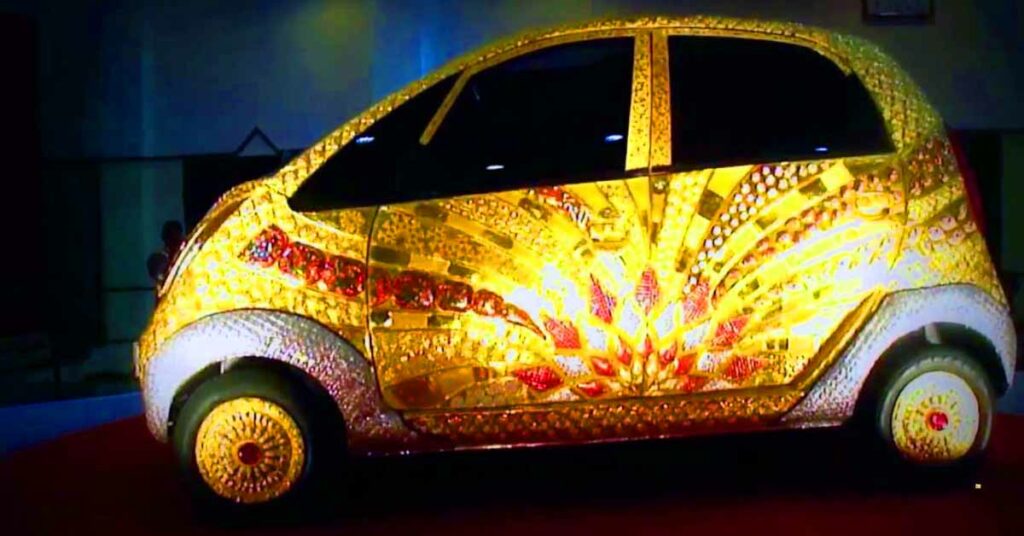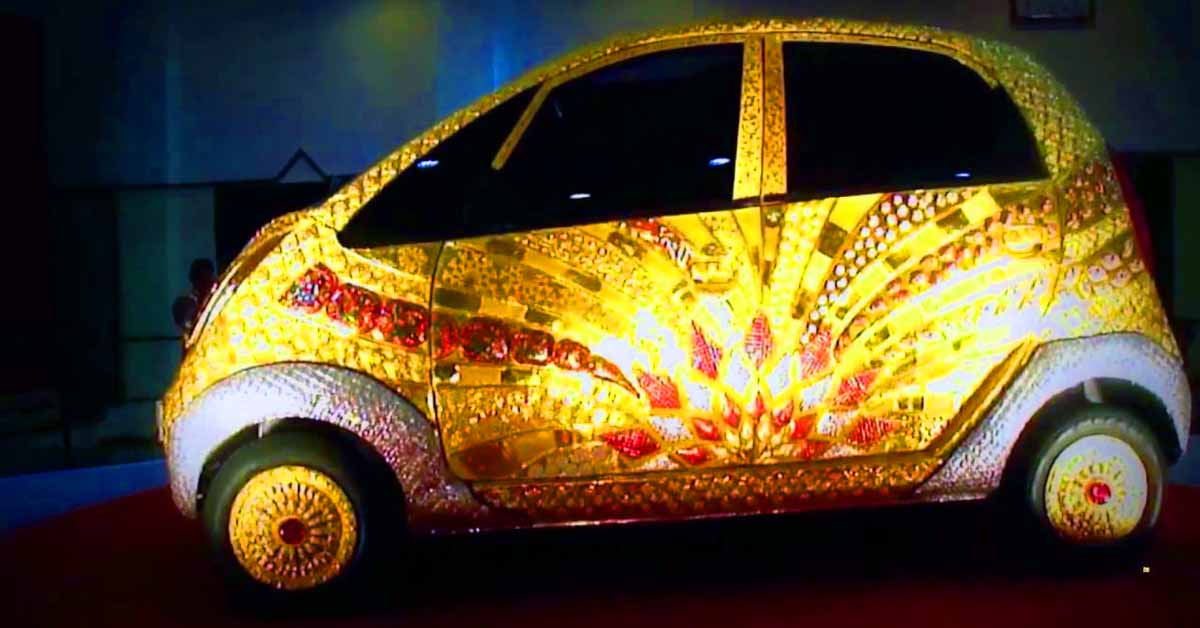Tata Nano has created a unique record of being the cheapest and the most expensive car in the world at the same time.
Here is how the cheapest car in the world, Tata Nano, was converted into the most expensive car in the world costing a whopping Rs 22 Crore. Such transformations are only possible if external elements are involved. In this case, the car is wrapped in precious gemstones, gold, silver and more. Tata showcased it back in 2011 as a part of a brand campaign for Goldplus Jewellery, which is a part of the Tata-owned Titan Group. And before you ask, it was not for sale.
You may also like: Meet Tata Nano and WagonR Budget Helicopters
You may also like: Watch Tata Nano vs RC Mercedes E Class in Demolition Derby
Rs 22 Crore Tata Nano
On the occasion of the celebration of India’s 5,000 years of jewellery making, this event was organised. Tata Chairman, Ratan Tata introduced this uniquely handcrafted Nano. It took almost 8 months and over 30 workers to finish this. Shockingly, it wears 80 kg gold, 15 kg silver along with gemstones like diamonds, rubies, etc. The vehicle was completed using traditional and regional forms of artistry in India including naqashi, intricate filigree, colourful meenarki and much more. It truly represents the Indian prowess in jewellery making.
You may also like: Tata Nano-Based Helicopter Car is a Hit With Wedding Planners
While the regular version of the Nano cost around Rs 2 lakh, this was estimated to cost a jaw-dropping Rs 22 Crore. That is the only time you will hear such a ginormous amount associated with a Nano. This unique iteration of the Nano was a showpiece that was designed to tour the jewellery stores owned by Tata throughout the country. It is a great way to advertise various facets of the company including the automobile and jewellery.
You may also like: 5 Reasons Why Tata Punch is India’s Most Successful SUVish Hatchback

Nano was originally designed to offer a common man an opportunity to fulfil his/her dream of owning a car. Initially planned to retail for that magical Rs 1 lakh mark, the vehicle used to cost around Rs 2 lakh by the end of its lifecycle. However, it didn’t achieve those sales figures that Tata was expecting. Nevertheless, it was a great product and opportunity for a lot of people and they enjoyed it to the core.


